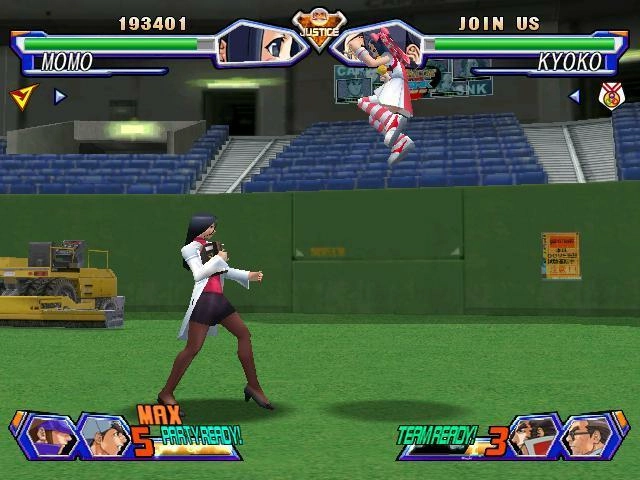
.jpg)

Project justice rival schools 2 dreamcast free#
While Rival Schools only plays a story if characters from the same school were selected, the game instead has separate Story and Free modes.
.jpg)
Project Justice’s single player mode was structured differently from its predecessor. As a result, special moves - in particular the Two-Person team up moves - tend to have a surreal edge, with methods to injure your opponent ranging from: forcing them to take part in an impromptu bout of synchronized swimming (on dry land) (if Nagare is in your team) confusing them by taking photographs of them in rapid succession during an interview for the school newspaper (if Ran is in your team), or even berating them so severely that they fall unconscious out of shame. If the person initiating the sequence gets the first successful hit in during the sequence before time runs out, the Team-Up they are caught in will be canceled, and the game switches back to the main fight if the opposing player gets the first hit or time runs out, the Team-Up continues as usual.Īdditionally, the ‘vigor’ meter in Project Justice is limited to 5 levels (down from 9 in Rival Schools), with Party-Ups requiring all 5 levels, Team-Ups continuing to cost two levels, and any attempts (successful or not) to cancel a Team-Up costing one level.Īs in the original game many of the characters use their chosen field of academic or sporting excellence as a fighting style. This initiates a short fighting sequence between one character from each team. The additional partner also allows players to cancel an opponent’s Team-Up Special by inputting a Team-Up command of their own. The Party-Up is a three-person attack that varies based on what school the character initiating the attack is from. This allows another Team-Up attack to be used in a fight, but also adds a new type of attack, the Party-Up, initiated by pressing any three attack buttons. The game continues to be a team fighter, but has teams of three characters instead of two. Project Justice’s fighting system is lifted from the original Rival Schools, with some notable changes. Shinya “Edayan” Edaki is the illustrator and the character designer for the series, and Yuki Iwai, Etsuko Yoneda, and Setsuo Yamamoto composed the music for this video game. It is the sequel to the 1997 arcade/PlayStation game Rival Schools: United by Fate. It was first released as an arcade game in 2000 and ported to the Dreamcast in 2001 (Decemin Japan, Apin Europe, and in North America). Just like before with the PS1 international release of Rival Schools, the Dreamcast international release of Project Justice had removed the Nekketsu Seiysun Nikki mode, which this time around takes the form of a board game and that the player could create and use their own custom character to navigate it while meeting and encountering the cast, who are all participating and taking part in an inter-school festival.Project Justice is a 3D competitive fighting game produced by Capcom.Failure to do so will lead to the bad ending in which Daigo succumbs to his own injuries and dies while success in doing this task will enable the player to save Daigo and get the good ending. In order to get the Gedo High School's good ending, the player must defeat Wild Daigo with a Party-Up technique.Both Sakura Kasugano and Raizo Imawano are the only two characters from the first game who aren't playable in the sequel due to their own reasons (Sakura getting involved in the events of Street Fighter and Raizo being seriously injured and hospitalized by the game's main antagonist Kurow Kirishima).Even more remarkable and extraordinary artwork for the characters.Another awesome and memorable soundtrack.The speed of the gameplay has been greatly increased, along with a few new fighting tactics introduced in the game itself.



 0 kommentar(er)
0 kommentar(er)
